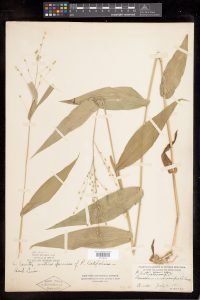Collected on the Fourth of July
Posted in Past and Present on July 1, 2016 by Stevenson Swanson
Stevenson Swanson is the Science Media Manager at The New York Botanical Garden.

Watching some fireworks, going to the local parade, grilling burgers and hot dogs, maybe even finding time for a nap. Sounds like a classic Fourth of July. Collecting plant specimens is notably missing from this list. And yet, for botanists, our nation’s birthday is not necessarily a day off.
A search of the C. V. Starr Virtual Herbarium, where The New York Botanical Garden’s digitized herbarium specimens are made available online to researchers and the public, reveals that it includes no fewer than 6,808 specimens that were collected on a Fourth of July. They come from around the world, but more than 1,000 were snipped or dug up in the United States on Independence Day. They eventually found their way to the Botanical Garden’s William and Lynda Steere Herbarium, where they are now part of the 7.8 million specimens that are preserved there and are now being digitized for the Starr Virtual Herbarium.
Gathered here are a few Fourth of July specimens collected by scientists of the past and present, including, most notably, the Garden’s founding Director-in-Chief, Nathaniel Lord Britton. Since the Garden is celebrating its 125th Anniversary this year, it’s only natural to wonder whether he was out in the field collecting on the Fourth in 1891, the year the Garden was founded.
No such luck: Perhaps he was enjoying a well-deserved break from laying the groundwork for what the Garden’s charter calls “a public botanic garden of the highest class.”
There is one tantalizing specimen from that date, however. It’s a broadleaf grass collected by Eugene P. Bicknell “between the Hudson and Bronx Rivers,” according to its label. There’s no further indication of the location, except the single word “Woods.” Maybe, just maybe, the industrious Mr. Bicknell plucked this grassy specimen—with permission, of course—while enjoying an Independence Day stroll through the old-growth forest at the newly established Botanical Garden.

